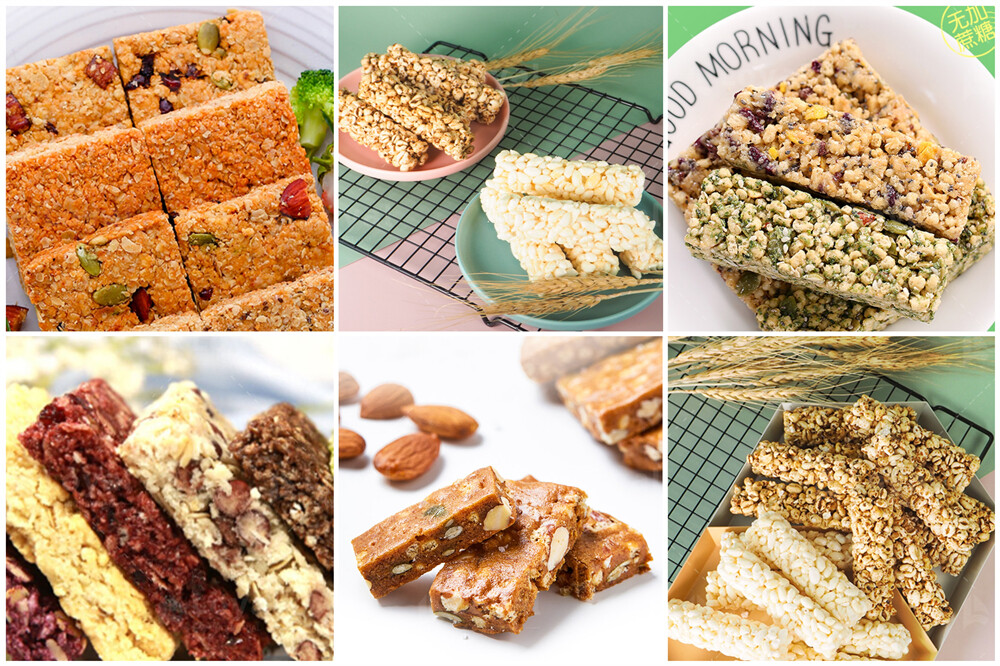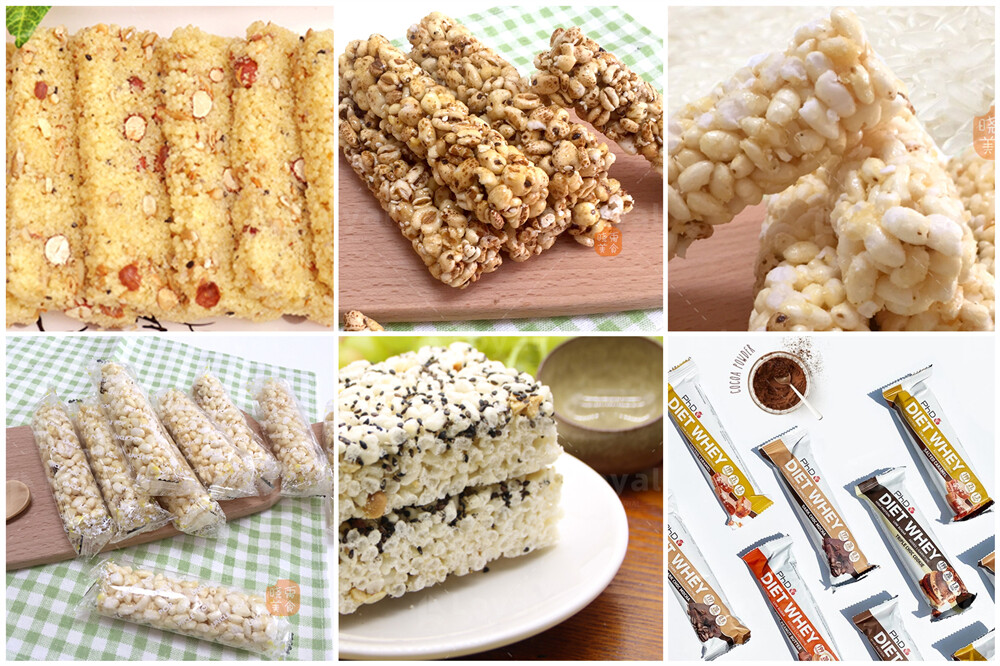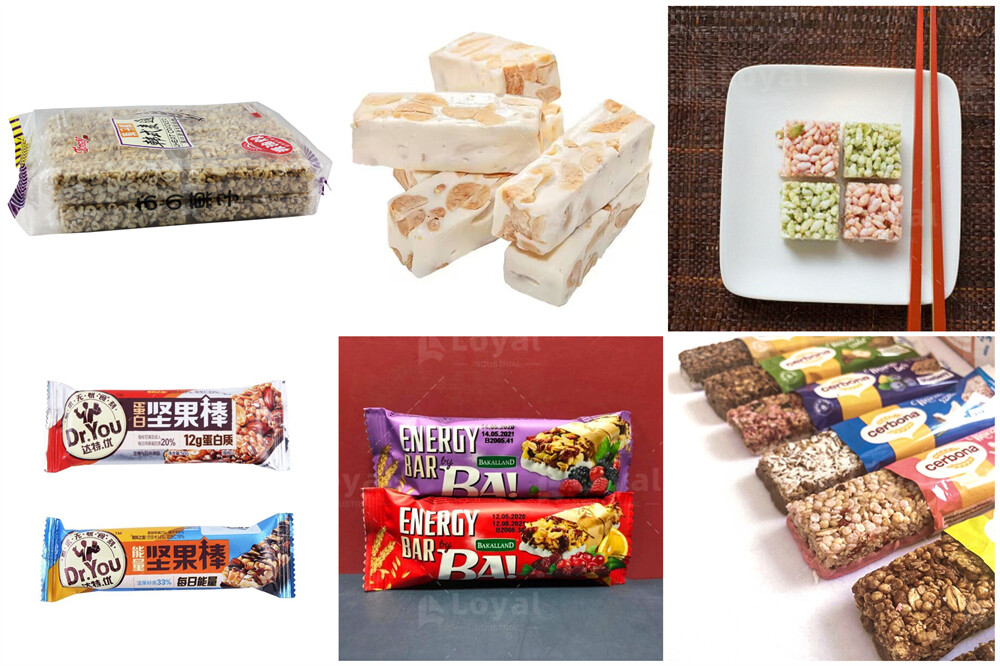The Ultimate Guide to Gogranola Bar Manufacturing in 2024
Introduction
The granola bar market has seen significant growth and evolution in recent years, and 2024 is shaping up to be a pivotal year for this sector. Granola bar manufacturing has become a key player in the health food industry, driven by increasing consumer demand for nutritious, convenient snacks. This guide aims to provide a comprehensive overview of the granola bar manufacturing process, from understanding market trends to setting up a state-of-the-art production facility.
Granola bars are celebrated for their versatility and health benefits. They offer a convenient source of energy, packed with essential nutrients, making them a popular choice among health-conscious consumers. The growing interest in healthier lifestyles has spurred innovation in the granola bar industry, leading to the development of products that cater to diverse dietary preferences and needs.
In this guide, we will delve into the intricate details of granola bar manufacturing, exploring each stage of the production process. We will cover the technical aspects of setting up a manufacturing facility. Additionally, we will discuss the importance of sourcing high-quality ingredients, developing recipes, and ensuring that your products meet stringent health and safety standards.
By the end of this guide, you will have a thorough understanding of the granola bar industry in 2024 and the tools and knowledge needed to succeed in this competitive market. Whether you are a seasoned manufacturer looking to innovate or a new entrant aiming to make a mark, this guide will serve as an invaluable resource in your journey through the world of granola bar manufacturing.

Types of Granola Bars
In granola bar manufacturing, understanding the different types of granola bars is crucial to meeting diverse consumer demands and staying competitive in the market. Here are the primary categories of granola bars produced in 2024:
Classic Granola Bars
Classic granola bars are the most traditional type, consisting of oats, nuts, dried fruits, and sweeteners like honey or syrup. These bars are popular for their simplicity and balanced nutritional profile. They typically undergo processes like mixing, baking, and cooling, which are standard in granola bar manufacturing.
Protein Granola Bars
Protein granola bars are designed to cater to the health-conscious and fitness-focused consumers. They contain added protein sources such as whey, soy, or pea protein. The production of these bars involves careful blending to ensure uniform distribution of protein throughout the bar, a critical aspect in granola bar manufacturing.
Low-Sugar and Keto Granola Bars
With the rising demand for low-carb and keto-friendly options, low-sugar granola bars have gained popularity. These bars use alternative sweeteners like stevia or erythritol and require precise ingredient handling to maintain taste and texture without compromising on dietary restrictions.
Organic and All-Natural Granola Bars
Organic and all-natural granola bars are made with ingredients that are free from synthetic pesticides, herbicides, and genetically modified organisms (GMOs). The manufacturing process for these bars must adhere to strict organic certification standards, ensuring that every ingredient meets regulatory requirements.
Functional Granola Bars
Functional granola bars are enriched with additional health benefits, such as added vitamins, minerals, or superfoods like chia seeds and flaxseeds. These bars cater to specific health needs, and their production involves specialized equipment to incorporate and evenly distribute these functional ingredients.
Customized and Gourmet Granola Bars
Customized and gourmet granola bars offer unique flavors and ingredient combinations, appealing to niche markets and gourmet consumers. The production process for these bars often involves small-batch manufacturing and artisanal techniques, emphasizing quality and uniqueness.

Ingredients and Formulation
In granola bar manufacturing, selecting high-quality ingredients and perfecting the formulation are critical to creating a product that meets consumer expectations and stands out in a competitive market. Here are the key components and considerations in the formulation process:
Core Ingredients
1. Oats: The primary base ingredient, providing texture and nutritional benefits. Use rolled oats for a chewy texture and quick oats for a finer consistency.
2. Nuts and Seeds: Almonds, walnuts, sunflower seeds, and chia seeds add crunch, flavor, and nutritional value, including healthy fats and proteins.
3. Sweeteners: Honey, maple syrup, and brown rice syrup are common natural sweeteners used to bind the ingredients and add flavor. For low-sugar options, consider stevia or monk fruit extract.
4. Dried Fruits: Raisins, cranberries, and apricots contribute natural sweetness, texture, and essential vitamins and minerals.
Protein Sources
Whey Protein: Ideal for high-protein granola bars, offering a complete amino acid profile.
Plant-Based Proteins: Pea protein and soy protein are excellent for vegan and vegetarian formulations, ensuring a broad market appeal.
Binding Agents
Nut Butters: Almond butter and peanut butter not only bind the ingredients but also enhance flavor and nutritional content.
Natural Syrups: Besides sweetness, they play a crucial role in holding the bar together, ensuring a consistent texture and structure during the manufacturing process.
Enhancements and Additives
Functional Ingredients: Superfoods like flaxseeds, chia seeds, and hemp hearts can be added for their health benefits and market differentiation.
Flavor Enhancers: Vanilla extract, cocoa powder, and spices like cinnamon can be used to create unique flavor profiles that attract a broader consumer base.
Formulation Process
The formulation process in granola bar manufacturing involves precise measurements and mixing techniques to ensure consistency and quality. Here are the essential steps:
1. Ingredient Weighing: Accurate weighing of ingredients is crucial for maintaining consistency in taste and nutritional value.
2. Mixing: Use industrial mixers designed for granola bar production to ensure thorough and uniform blending of all ingredients.
3. Binding and Shaping: Proper binding agents and techniques are necessary to achieve the desired bar shape and texture. This step often involves specialized machinery that can press and cut the mixture into bars.
4. Baking or Chilling: Depending on the formulation, granola bars can be baked or chilled. Each method affects the bar's texture and shelf life.
5. Quality Control: Implement rigorous quality control measures to check for consistency in size, shape, and ingredient distribution, ensuring each bar meets high standards.

Key Features of the Granola Bar Manufacturing Machine
Feature | Description |
| Automated Mixing | Ensures uniform blending of all ingredients, improving consistency and reducing labor costs. |
| Precision Weighing System | Accurate ingredient measurement for maintaining consistent taste and nutritional values. |
| Temperature Control | Maintains optimal temperatures during mixing and baking/chilling to ensure proper texture. |
| High-Speed Forming | Shapes granola bars quickly and uniformly, increasing production efficiency. |
| Adjustable Pressing | Allows for customization of bar thickness and density to meet diverse product specifications. |
| Continuous Operation | Supports non-stop production with minimal downtime, enhancing overall productivity. |
| Easy Cleaning and Maintenance | Designed for quick disassembly and cleaning, ensuring hygiene and reducing maintenance time. |
| Recipe Storage | Capable of storing multiple recipes for easy switching between different granola bar types. |
| Quality Control Sensors | Integrated sensors to detect inconsistencies in size, shape, and ingredient distribution. |
| Energy Efficiency | Optimized for low energy consumption, reducing operational costs and environmental impact. |

Granola Bar Manufacturing Process
In granola bar manufacturing, understanding the detailed production process is crucial for maintaining product quality and operational efficiency. Below is a step-by-step overview of the granola bar manufacturing process:
1. Ingredient Preparation
Sourcing: Ensure all ingredients, such as oats, nuts, sweeteners, and dried fruits, meet quality standards.
Weighing and Measuring: Use precision weighing systems to measure ingredients accurately.
2. Mixing
Industrial Mixers: Utilize high-capacity mixers to blend ingredients uniformly, ensuring consistent texture and flavor.
Incorporating Additives: Add functional ingredients like protein powders or superfoods during the mixing phase.
3. Forming
Extrusion: Employ extrusion machines to shape the granola mixture into bars. This method ensures uniformity in size and shape.
Pressing: Use adjustable pressing mechanisms to achieve the desired bar thickness and density.
4. Baking or Chilling
Baking: For baked granola bars, use ovens with precise temperature control to achieve the right texture and moisture content.
Chilling: For no-bake bars, employ cooling tunnels to set the mixture quickly and maintain its shape.
5. Cutting
High-Speed Cutters: Utilize automated cutting machines to slice the continuous sheet of granola into individual bars accurately.
Quality Control: Implement sensors to detect inconsistencies in bar size and shape during the cutting process.
6. Packaging
Primary Packaging: Use flow wrappers or vacuum sealers to package individual bars, ensuring freshness and extending shelf life.
Secondary Packaging: Employ cartoners or case packers for grouping individual bars into multipacks or bulk packaging.
7. Quality Assurance
Inspection Systems: Integrate visual and weight-based inspection systems to ensure each bar meets quality standards.
Sampling: Conduct regular sampling and testing for taste, texture, and nutritional content to maintain product consistency.
8. Storage and Distribution
Storage: Keep finished products in a controlled environment to preserve quality before distribution.
Distribution: Plan logistics to deliver products efficiently to retailers or direct consumers.

Equipment for Granola Bar Manufacturing
In granola bar manufacturing, the selection of the right equipment is essential to ensure efficiency, consistency, and product quality. Here’s an overview of the key equipment used in the granola bar manufacturing process:
1. Ingredient Handling Systems
Bulk Storage Silos: Store large quantities of ingredients like oats, nuts, and sweeteners to maintain a continuous production flow.
Conveyors: Transport raw materials from storage to the mixing area, ensuring a seamless supply chain.
2. Mixing Equipment
High-Capacity Mixers: Industrial mixers blend ingredients uniformly, crucial for maintaining the consistency of the granola bar mixture.
Ribbon Blenders: Ideal for mixing dry ingredients thoroughly before adding wet binders.
3. Forming Machines
Extruders: Shape the mixed granola into a continuous sheet or individual bar shapes, ensuring uniformity and reducing waste.
Roller Presses: Press the granola mixture to the desired thickness and density, essential for achieving the right texture.
4. Baking and Chilling Equipment
Convection Ovens: For baked granola bars, these ovens provide even heating to ensure consistent cooking.
Cooling Tunnels: Quickly chill no-bake granola bars to set them properly and maintain their shape.
5. Cutting Machines
High-Speed Cutters: Precisely cut the granola sheet into individual bars, maintaining uniformity in size and shape.
Ultrasonic Cutters: Use ultrasonic waves to make clean cuts, ideal for sticky or dense granola mixtures.
6. Packaging Machines
Flow Wrappers: Individually wrap each granola bar, protecting them from moisture and contamination.
Vacuum Sealers: Extend the shelf life by removing air from the packaging, ideal for bulk storage.
Cartoners: Group individual bars into multipacks or bulk packages efficiently for retail distribution.
7. Quality Control Systems
Metal Detectors: Ensure no metal contaminants are present in the final product.
Checkweighers: Verify the weight of each bar to ensure consistency and compliance with labeling.
8. Ancillary Equipment
Labeling Machines: Apply labels to individual bars and packages, ensuring they meet regulatory requirements.
Date Coders: Print manufacturing and expiration dates on packaging for traceability.
9. Automation and Integration
SCADA Systems: Supervisory Control and Data Acquisition systems monitor and control the manufacturing process, ensuring efficiency and reducing downtime.
Robotic Arms: Automate repetitive tasks such as packaging and palletizing, increasing production speed and reducing labor costs.

Setting Up a Manufacturing Facility
Setting up a granola bar manufacturing facility involves careful planning, precise execution, and adherence to industry standards to ensure efficiency, quality, and compliance. Below are the key steps to establish a state-of-the-art manufacturing facility:
1. Location Selection
Proximity to Raw Materials: Choose a location close to suppliers to reduce transportation costs and ensure a steady supply of ingredients.
Logistics and Distribution: Ensure the facility is accessible for efficient distribution to retailers and consumers.
2. Facility Layout and Design
Workflow Optimization: Design the layout to streamline the manufacturing process from ingredient handling to packaging, minimizing delays and bottlenecks.
Zoning: Create separate zones for different stages of production, such as mixing, baking, cutting, and packaging, to maintain hygiene and prevent cross-contamination.
3. Equipment Installation
State-of-the-Art Machinery: Install high-capacity mixers, ovens, cooling tunnels, cutting machines, and packaging equipment tailored for granola bar production.
Automation Integration: Incorporate automated systems like conveyors, robotic arms, and SCADA systems to enhance efficiency and reduce labor costs.
4. Compliance with Health and Safety Standards
Regulatory Requirements: Ensure the facility meets local and international food safety regulations, such as HACCP (Hazard Analysis Critical Control Point) and GMP (Good Manufacturing Practices).
Sanitation Protocols: Implement strict sanitation protocols and regular cleaning schedules to maintain a hygienic production environment.
5. Staff Training and Management
Skilled Workforce: Hire experienced personnel and provide comprehensive training on operating machinery, quality control, and safety procedures.
Continuous Education: Offer ongoing training programs to keep staff updated on the latest industry practices and technological advancements.
6. Quality Control Systems
Inspection and Testing: Set up quality control labs for regular testing of raw materials and finished products to ensure they meet quality standards.
Automated Inspection: Use metal detectors, checkweighers, and other inspection systems to identify and address defects in the production line.
7. Sustainability Practices
Energy Efficiency: Implement energy-efficient technologies and practices to reduce the facility’s carbon footprint.
Waste Management: Develop a waste management plan to recycle or properly dispose of production waste, ensuring minimal environmental impact.
8. Scalability and Flexibility
Modular Design: Design the facility with scalability in mind, allowing for easy expansion as production demands increase.
Versatile Equipment: Invest in versatile machinery that can adapt to different product formulations and production volumes.

References
The following are five authoritative foreign literature websites in the field of nutrition bars making machines:
1. Reading Bakery Systems
Website: [https://www.readingbakery.com]
2.Bühler Group
Website: [https://www.buhlergroup.com]
3. GEA Group
Website: [https://www.gea.com]
4. Sollich KG
Website: [https://www.sollich.com]
5. Hacos
Website: [https://www.hacos.com]













